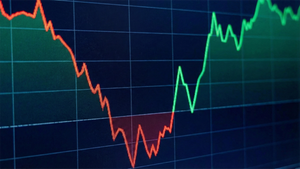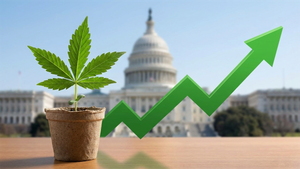
Wall Street has experienced a broadly positive day, marked by a resilient rally that has added over $1 trillion in market value. This surge in investor confidence is primarily driven by a confluence of strong corporate earnings, sustained momentum in the technology sector, and a perceived easing of anxieties related to tariffs. Major indexes, including the Dow Jones Industrial Average (DJIA), S&P 500 (SPX), and Nasdaq Composite (IXIC), all posted significant gains, signaling a robust appetite for risk among investors and a renewed sense of optimism in the market's underlying health.
This positive momentum suggests that despite lingering macroeconomic uncertainties, the market is finding solid ground in fundamental strengths. The impressive performance of public companies and the strategic maneuvers in the tech landscape are painting a picture of resilience, potentially setting the stage for continued upward trends in the near future.
What Happened and Why It Matters
The recent surge on Wall Street is a testament to the market's ability to find strength in fundamental data, even amidst a complex global economic landscape. The primary catalyst for this rally has been an exceptionally strong corporate earnings season, coupled with the unwavering performance of the technology sector and a notable reduction in tariff-related jitters.
Specifically, over 80% of S&P 500 (SPX) companies have surpassed their earnings estimates, a significant factor in boosting investor confidence. Second-quarter earnings growth for S&P 500 companies is now estimated at a robust 9.8%, a substantial increase from earlier, more conservative projections. This strong earnings performance has been particularly reassuring, especially given previous concerns about economic growth and the potential impact of trade tensions. Companies such as Palantir (NYSE: PLTR), DoorDash (NASDAQ: DASH), Duolingo (NASDAQ: DUOL), and Gilead Sciences (NASDAQ: GILD) have reported impressive financial results, further contributing to the overall positive sentiment.
The technology sector continued to demonstrate remarkable strength, playing a pivotal role in the market's rally. High-growth technology stocks, including Nvidia (NASDAQ: NVDA), Microsoft (NASDAQ: MSFT), Apple (NASDAQ: AAPL), and Alphabet (NASDAQ: GOOGL), have seen substantial gains, fueled by stable earnings outlooks and robust demand in artificial intelligence (AI) and cloud services. The "Magnificent Seven" tech giants, in particular, have collectively added trillions to their market capitalization, with the S&P 500's information technology sector surging over 41% since early April. This sustained performance underscores the sector's innovation and its critical role in driving market growth.
Furthermore, a perceived easing of tariff-related anxieties contributed significantly to the positive market mood. Despite the implementation of new tariffs, the market's reaction was largely muted, as hopes for potential interest rate cuts and the strong corporate earnings overshadowed these concerns. Notably, President Trump's announcement of a 100% tariff on chip imports, coupled with an exemption for companies manufacturing in the U.S., was viewed favorably by the market, leading to gains in semiconductor stocks like Nvidia (NASDAQ: NVDA) and Broadcom (NASDAQ: AVGO). Apple's (NASDAQ: AAPL) commitment to invest an additional $100 billion in U.S. manufacturing also helped alleviate trade-related worries. The fact that some of the tariffs implemented were lower than initially threatened further contributed to a sense of relief among investors. This combination of strong fundamentals and reduced trade uncertainty has created a fertile ground for the current market rally.
Winners and Losers in the Current Rally
The current Wall Street rally, driven by robust corporate earnings, the sustained strength of the technology sector, and an evolving landscape of tariff-related anxieties, has created a clear delineation between winning and losing companies. Their fortunes are often directly tied to these macroeconomic factors.
Winners in the Current Wall Street Rally:
The primary beneficiaries of this rally are companies demonstrating strong corporate earnings and those within the thriving technology sector, particularly those at the forefront of artificial intelligence (AI) innovation. The easing of some tariff-related anxieties has also provided a boost to specific industries. The so-called "Magnificent Seven" – Apple (NASDAQ: AAPL), Microsoft (NASDAQ: MSFT), Nvidia (NASDAQ: NVDA), Amazon (NASDAQ: AMZN), Alphabet (NASDAQ: GOOGL), Meta Platforms (NASDAQ: META), and Tesla (NASDAQ: TSLA) – have been the most significant drivers of the S&P 500's (SPX) performance, collectively adding trillions in market capitalization since April 2025. Their immense market capitalizations and robust earnings, especially in AI, give them an outsized effect on the overall index.
Nvidia (NASDAQ: NVDA) stands out, with its AI-driven memory chip demand boosting earnings by an impressive 45% year-over-year in Q2 2025. It, along with Broadcom (NASDAQ: AVGO), Advanced Micro Devices (NASDAQ: AMD), Taiwan Semiconductor Manufacturing Co. (NYSE: TSM), and Micron (NASDAQ: MU), also saw gains as President Trump indicated tariff exemptions for companies committing to U.S. manufacturing. Other notable tech winners include Coinbase Global (NASDAQ: COIN), which soared over 140% since April, and Seagate Technology (NASDAQ: STX) and Microchip Technology (NASDAQ: MCHP), both of which more than doubled in value. Arista Networks (NYSE: ANET) saw its stock leap after delivering stronger-than-expected profit and a positive revenue forecast. ServiceNow (NYSE: NOW) also experienced a significant jump after reporting strong profits, driven by its AI platform. Beyond tech, companies reporting robust financial performance have been rewarded. McDonald's (NYSE: MCD) climbed after reporting stronger profit and revenue, partly due to successful promotional offerings. Shopify (NYSE: SHOP) jumped significantly after exceeding revenue expectations and forecasting continued strong trends. Southwest Airlines (NYSE: LUV) and American Airlines (NASDAQ: AAL) reported stronger-than-expected results for the first quarter of 2025. Financial and insurance groups like NN Group (AMS: NN), Zurich Insurance Group (SWX: ZURN), and Brookfield Corporation (NYSE: BN) have also reported strong half-year results in 2025, driven by business performance, favorable market conditions, and strategic growth. Sandoz (SWX: SDZ) delivered strong H1 2025 results, with accelerated sales growth driven by biosimilars and successful launches. While tariffs have been a source of anxiety, some companies have benefited from policy shifts or specific tariff structures. Domestic producers, such as U.S. steel and aluminum companies (e.g., Nucor (NYSE: NUE)), are potential winners as tariffs on imported goods make foreign competitors' products pricier, increasing demand for domestic alternatives. The lumber market has seen prices trending higher due to expectations of interest rate cuts and ongoing U.S. tariffs on Canadian softwood imports, benefiting domestic lumber companies.
Losers in the Current Wall Street Rally:
Despite the overall rally, several companies and sectors have faced headwinds, primarily due to the direct impact of tariffs, disappointing earnings, or broader economic challenges. Crocs (NASDAQ: CROX) saw its shares lose more than a quarter of their value after stating that tariffs were expected to negatively impact its current-quarter results. PepsiCo (NASDAQ: PEP) cut its profit forecast for 2025, citing increased costs from tariffs, including a 25% tariff on imported aluminum for cans. Automakers like General Motors (NYSE: GM), Ford (NYSE: F), Toyota (NYSE: TM), Nissan (TYO: 7201), and Hyundai (KRX: 005380) have reported significant tariff costs, directly hitting their profitability. The automotive industry, being highly globalized, faces increased import costs, which are expected to lead to declining margins and higher prices for consumers. Super Micro Computer (NASDAQ: SMCI) reported weaker-than-expected results, partly due to higher costs from tariffs and changes required by a major customer. Mosaic (NYSE: MOS), a fertilizer company, saw its performance pressured by tariffs, among other factors. Companies with extensive overseas manufacturing and supply chains, even tech giants like Apple (NASDAQ: AAPL) and Amazon (NASDAQ: AMZN), have incurred significant tariff-related costs due to their reliance on manufacturing in countries subject to high tariffs.
Companies with disappointing earnings or outlooks have also suffered. Eli Lilly (NYSE: LLY) plunged after disappointing trial results for its oral weight-loss drug, despite otherwise better-than-expected earnings. Fortinet (NASDAQ: FTNT), a cybersecurity company, saw its stock plummet after its outlook for the current quarter failed to impress Wall Street, despite sales and earnings coming in ahead of expectations. This highlights how market sentiment can punish even strong current performance if future guidance is not optimistic enough. Procter & Gamble (NYSE: PG), while reporting stronger results, cut its profit growth forecast for the fiscal year, expecting a $200 million hit from higher commodity costs. Snap (NYSE: SNAP) reported an increased net loss and slumped adjusted EBITDA, indicating struggles in its advertising platform. Electric vehicle (EV) manufacturers Lucid Motors (NASDAQ: LCID) and Rivian (NASDAQ: RIVN) missed earnings expectations, facing deeply negative gross margins due to cost pressures and challenges from policy shifts and trade tensions. Energy stocks have generally fallen due to weaker oil prices. Industrial companies, particularly those with extensive international supply chains and exposure to raw material costs, are among the potential losers as tariffs can squeeze their profit margins. The broader market breadth has narrowed, meaning fewer individual stocks are participating in the rally, raising concerns about its sustainability. This suggests that many companies outside the dominant tech players are not experiencing the same upward momentum.
Industry Impact and Broader Implications
The recent "Wall Street's Resilient Rally," which has seen the Nasdaq Composite (IXIC) reach new record highs and the S&P 500 (SPX) approach its all-time peak, signals a strong rebound in investor confidence. This surge follows a period of volatility and is driven by better-than-expected corporate earnings, positive macroeconomic data, and evolving expectations around monetary policy, including hopes for Federal Reserve rate cuts. The rally has been particularly fueled by the technology sector, especially companies involved in artificial intelligence (AI), and a pause in U.S.-China tariff increases.
The current rally fits into several broader industry trends. The dominance of technology and AI is undeniable, with the rally largely concentrated in a few mega-cap technology companies, often referred to as the "Magnificent Seven." This highlights a "winner-take-all" dynamic where a few innovative companies capture a disproportionate share of market value. Nvidia (NASDAQ: NVDA), for instance, has seen its stock surge due to booming demand for AI accelerators. Despite the headline index gains, there are concerns about market breadth, meaning fewer individual stocks are participating in the upward movement. The S&P 500's advance-decline line has been in decline even as the index itself soared, indicating an erosion of sentiment in the broader equities market masked by the performance of a select few. Small-cap and mid-cap stocks, in particular, have struggled to gain traction. However, there are recent signs of the rally broadening beyond big tech, with cyclicals and small caps starting to join the charge in the second half of 2025. The industrials sector has also seen a significant surge, outperforming other sectors after lagging for several years. The rise of passive investing, where capital flows into broad market indices, inadvertently concentrates wealth in the largest constituents, further solidifying the market dominance of these tech giants. Positive economic reports, including better-than-expected retail sales and falling jobless claims, suggest resilience in the U.S. economy, supporting the Federal Reserve's stance on interest rates.
The rally has significant ripple effects across industries. Companies directly competing with the "Magnificent Seven" face an increasingly challenging environment due to the immense scale, resources, and rapid innovation capabilities of these dominant firms. This dynamic could lead to further industry consolidation as smaller players struggle to keep pace. Conversely, partners or suppliers to these dominant tech firms may see benefits, but their fortunes become heavily tied to the success of a concentrated few. For example, semiconductor manufacturers like Taiwan Semiconductor Manufacturing Company (NYSE: TSM) have seen strong earnings driven by robust demand from AI and other tech sectors. Smaller, emerging companies might find it easier to raise capital as investor appetite for risk increases during a rally, potentially fueling further innovation and competition. Given the U.S. stock market's position as the world's largest, its movements often set the tone for global stock trends, and significant shifts in the U.S. economy disproportionately impact other countries. Companies with strong balance sheets and diversified revenue streams are better positioned to weather downturns and potentially gain market share from weaker rivals.
The rally and its underlying dynamics have several regulatory and policy implications. The increasing market concentration, particularly in the technology sector, could eventually draw greater scrutiny regarding anti-trust concerns and market power. Policymakers may examine whether such concentration stifles competition and innovation in the long run. The market has shown significant sensitivity to trade policy news, with a pause in tariff increases sparking a substantial rally. Ongoing trade tensions and looming tariff threats continue to be closely watched, as they can create uncertainty for businesses, contribute to inflation, and disrupt global supply chains. Hopes for Federal Reserve rate cuts, driven by cooling inflation, have bolstered investor sentiment and are a primary driver of the rally. The market closely monitors the Fed's stance on interest rates and economic data, especially around tariffs and inflation. Strong and sound regulations of financial markets are crucial for stock market growth and development, helping to endure the repercussions of future financial crises and restoring investor confidence. High quality of governance, including transparency, shareholder rights protection, and fair regulatory oversight, is associated with higher stock returns and attracts foreign direct investment.
Stock market rallies are a recurring feature of financial markets, often driven by positive news, strong investor confidence, or favorable government policies. However, history also shows that some significant surges can precede market downturns. Historically, Federal Reserve rate cuts have sometimes helped sustain economic expansion, as seen in 1996 and 1998, leading to significant stock market gains. However, in other instances, such as 2001 and 2007, rate cuts preceded economic worsening and market tumbles. The key differentiator is whether the economy slips into recession. The current environment, with high valuations and geopolitical tensions, echoes elements of past economic cycles. Historical boom-bust episodes, like the Dot-Com Bubble burst in 2000 and the 2008 Financial Crisis, were often driven by inflated valuations, over-leverage, and market concentration. The Dot-Com Bubble, for example, saw the NASDAQ (IXIC) rise by 582% over five years due to speculation in internet-based businesses before bursting. Late-cycle rallies often hinge on a handful of superstar stocks, masking broader weakness, a pattern observed in the current rally with the "Magnificent Seven". Rapid rate hikes, tariff shocks, or sudden tightening of credit can prick an overextended market. The market's rapid rebound in April 2025 after a pause in tariff increases highlights its sensitivity to trade policy. The longest stock market rally in history lasted 13 years, from March 2009 to February 2022, during which the S&P 500 (SPX) rose over 400%. This "Post-GFC Boom" was driven by cheap money and a technology revolution. Some analysts draw parallels between the current environment and the October 1987 crash, particularly concerning high stock market valuations and aggressive pressure on the Federal Reserve to cut interest rates, which could lead to dollar depreciation. While history may not repeat itself exactly, it often "rhymes."
What Comes Next
As Wall Street basks in its resilient rally, the market looks ahead to a landscape filled with both promising possibilities and potential challenges. The interplay of corporate earnings, monetary policy expectations, and global trade dynamics will largely dictate the market's trajectory in the short and long term.
In the short term, the rally may continue, with Goldman Sachs projecting the S&P 500 (SPX) Index to rise 6% to 6,600 in the next six months and 11% to 6,900 in the next 12 months, an upward revision from previous forecasts. This optimism is fueled by expectations of earlier and deeper rate cuts from the Federal Reserve, lower bond yields, and sustained strength in large-cap stocks. The market has shown a strong "buy on the dip" mentality, and the current optimistic sentiment is supported by fundamental economic strengths and a potentially more favorable monetary policy environment. Some analysts suggest that the market could continue to climb as the recent narrow rally broadens to other sectors. However, some Wall Street firms are warning clients to prepare for a near-term pullback, with potential corrections of 10% to 15% in the coming weeks and months, citing sky-high equity valuations and souring economic data. Historically, August and September have been the two worst months for the S&P 500, suggesting a period of consolidation or modest pullbacks is not unexpected. Looking further ahead, the long-term possibilities include a sustained period of lower interest rates if economic growth remains subdued or inflation continues to trend downwards, potentially fueling investment and innovation across various sectors. The resilient outlook for earnings growth in 2026 also supports the possibility of continued market ascent.
Given the evolving market landscape, investors may need to consider several strategic pivots and adaptations. While the rally has been heavily concentrated in a narrow subset of stocks, particularly the "Magnificent Seven" technology giants, there's a growing expectation of a rotation into undervalued sectors. Opportunities may emerge in industrials, healthcare, and financials, which have shown signs of recovery and strong fundamentals. Diversifying across these segments can reduce single-stock concentration and offer more resilient returns. In a volatile environment, dollar-cost averaging (DCA)—investing fixed amounts at regular intervals—can help reduce the risk of overpaying during market peaks. Elevated valuations and narrow market breadth necessitate caution. Investors should consider capping exposure to mega-cap tech stocks (e.g., limiting allocations to 10-15% of equity portfolios) and using options strategies like covered calls or protective puts to hedge against volatility. Monitoring macroeconomic signals, including inflation and Fed rate-cut expectations, is also crucial. If interest rates fall, sectors that rely heavily on debt, such as real estate and homebuilders, could benefit from cheaper borrowing costs. Additionally, dividend stocks may become more attractive to yield-hungry investors as income becomes harder to find elsewhere. International diversification and tactical ETFs can help hedge against U.S. tariff risks while capturing global growth, especially with a potentially weaker U.S. dollar making emerging markets more attractive.
Several scenarios could unfold for the Wall Street rally. An optimistic "Goldilocks" environment involves moderate growth and contained inflation, leading to a sustained bull market. This would be supported by successful Fed rate cuts stimulating economic activity and inflation gradually returning to target. If economic data or policy decisions deviate from current expectations, periods of increased volatility and market corrections could occur. Some analysts anticipate a "two steps forward, one step back" setup, with pullbacks viewed as buying opportunities. In a "soft landing" scenario, the Fed successfully navigates rate cuts, avoiding a recession. Conversely, a "hard landing" would see rate cuts proving insufficient to prevent a recession, or persistent inflation leading to stagflation. The Federal Reserve might implement a "stop-go" policy, cutting rates, then pausing, then cutting again, reacting to fluctuating economic conditions. Finally, the current narrow rally, heavily reliant on mega-cap tech, could broaden to include other sectors, leading to more diversified gains across the index.
Conclusion
Wall Street's recent rally stands as a testament to the market's inherent resilience, driven by a powerful combination of strong corporate earnings, the unwavering momentum of the technology sector, and a palpable easing of tariff-related anxieties. This surge, which has added over a trillion dollars in market value, underscores a renewed sense of investor confidence and a focus on fundamental strengths. The impressive performance of companies across various sectors, particularly in tech, has provided a solid foundation for this upward trend, demonstrating that innovation and robust financial health remain key drivers of market success.
Moving forward, investors should remain vigilant and adaptable. While the immediate outlook appears positive, with projections for continued growth, the market is not without its potential pitfalls. The concentration of gains in a few mega-cap technology stocks, while impressive, raises questions about market breadth and sustainability. A potential broadening of the rally to include other sectors would signal a healthier, more diversified market. Furthermore, the ongoing dance between inflation, interest rate expectations, and global trade policies will continue to shape market sentiment.
Ultimately, the significance of this rally lies in its demonstration of the market's ability to find strength in underlying economic fundamentals, even amidst a complex global environment. Investors should closely monitor corporate earnings reports, the Federal Reserve's monetary policy decisions, and any developments in international trade relations. A well-diversified portfolio, coupled with a cautious and informed approach to risk management, will be crucial for navigating the opportunities and challenges that lie ahead in the coming months. The current rally, while exhilarating, serves as a reminder that market dynamics are constantly evolving, demanding continuous analysis and strategic foresight.

















